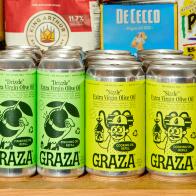
Recipe courtesy of Alan Morrison
Steamed Maryland Blue Crabs for 14
Getting reviews...
- Level: Easy
- Total: 50 min
- Active: 30 min
- Level: Easy
- Total: 50 min
- Active: 30 min
Ingredients
Directions
Special equipment:
Brown packaging paper for covering table Tape 4 gallon crab pot, with tight-fitting lid Heavy garden gloves Wooden mallets or hammers Small paring knives- Cover tables, preferably outdoors, with brown packaging paper and tape. For each pot of crabs, add water, beer, and approximately 1/4 packet of crab boil seasoning to pot. Bring to boil. With gloves on, remove crabs from bushel, you may have to pull them apart (carefully!) and put/shake a few at a time into pot. It is best to grab them from behind to avoid the claws, as their legs only move forward. Add enough crabs to fill bottom of pot. Sprinkle more crab boil seasoning over first layer of crabs. Continue, alternating crabs and seasoning until pot is nearly full, leaving about an inch at the top. Cover tightly. Steam over high heat for 14 to 16 minutes, or until shells are bright orange. Halfway through cooking time, shake pot to redistribute seasoning. When done, remove pot from heat. Drain over sink the accumulated liquid from pot. Spread crabs onto large tray; place in center of table where guests help themselves. Serve with small dishes of melted butter and, for those who like added seasoning, place small bowls of extra crab boil seasoning on table.
- Eating guidelines: It is easier to learn how to eat crabs from an expert, but if none is available, here are step-by-step instructions. First, pull off claws and legs. Break legs and check for meat. Sucking is okay. Some like to save the claws for last because they are rather dessert-like, although the "lump" meat from the body is prized most. Next, turn the crab on its back. You will see an elongated part of the shell that looks like a "T." Some call it the key, even though it doesn't look very much like one. The female key is plumper; the male's is more elongated. Pull the key back, breaking it off, which makes the rest of the shell easy to remove. Now the body of the crab is shell-less. You will now see the long rib-like strips on either side of the cavity. These are the crab's gills. Edible, but not very good. Pull them off, and you will more easily be able to break the crab in half. When you do this, you will most likely now see a good amount of white, fleshy "lump" crab meat. Continue opening the small sections to expose more meat. You will not need mallets or hammers for this. When you are ready for the claws, break them in half at the joint. Take a wooden mallet and whack the large half hard. Don't be shy.
Cook’s Note
Don't wear your Sunday best. If it tastes good, you can eat it. Plates and cutlery are unnecessary; the brown paper is a communal plate. Bibs are for babies. When finished, steamed hand towels are very welcome. The easiest way to dispose of the mess is to roll up the brown paper with all the shells, etc. on it -- taking care to "rescue" knives, bowls, etc. first -- and discard in outdoor trash can. The garbage may attract animals, so be sure to keep the lid on tight. Note: Leftover crabs are excellent cold, served with a mayonnaise based dipping sauce. Cooked crabs will keep in refrigerator for a few days.
Looking for Something Else?
Related Pages
- Stuffed Crab Recipe
- Spicy Crab Boil For Blue Crabs Recipe
- Whole Blue Crabs New Orleans-style Recipe
- Grilled Soft-Shell Crabs Recipe
- Steamed Maryland Blue Crabs Recipe
- Beer-Poached Blue Crabs with Sweet 'n' Savory...
- Classic Maryland Crab Feast Recipe
- Maryland Blue Crab Cup Recipe
- Blue Crabs with Spicy Butter Recipe






























